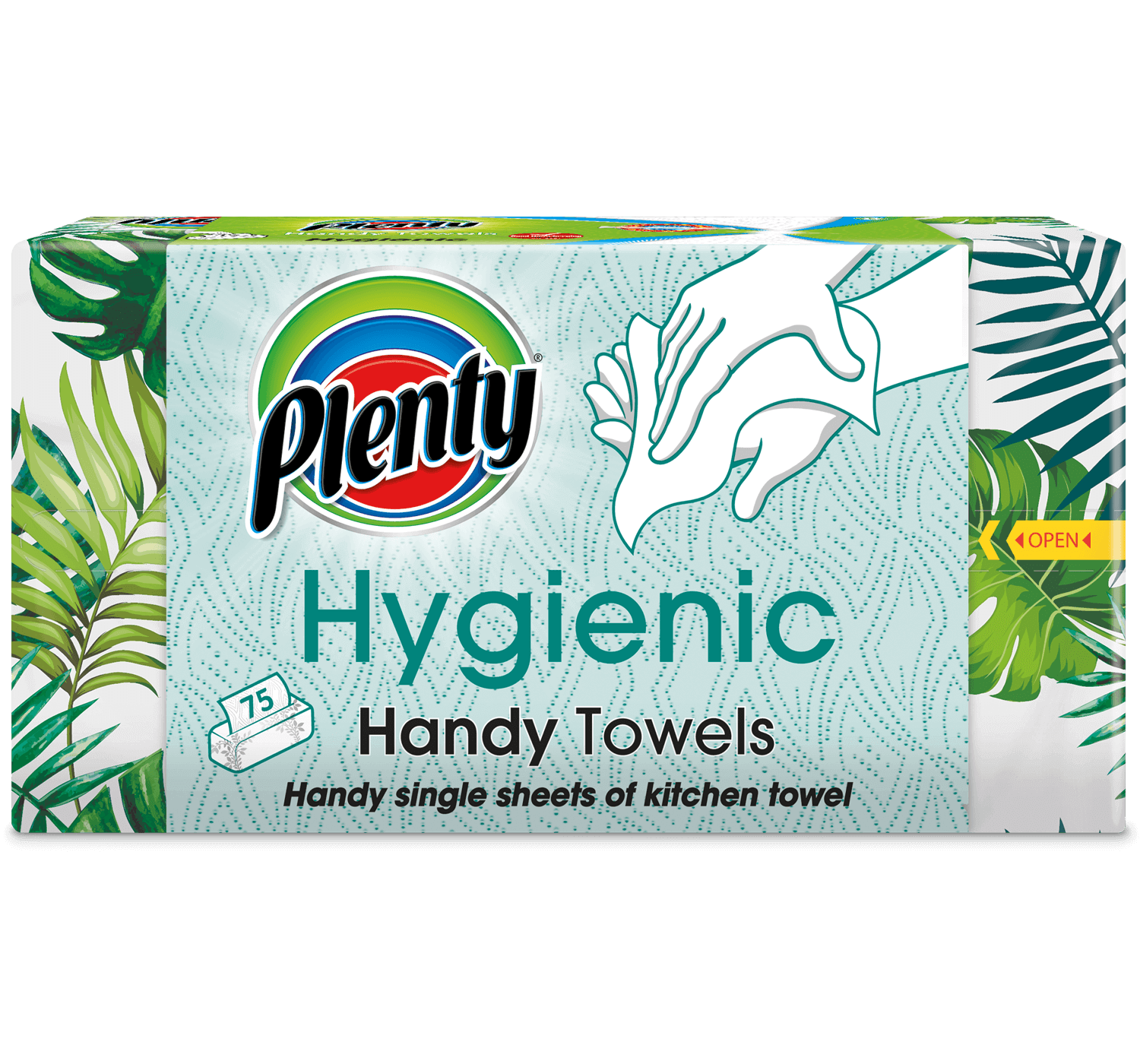Plenty verbessert seinen Ruf als hochwertige Marke dank Ratings and Reviews von Bazaarvoice
Plenty, die führende Marke im Bereich Küchenpapier, erzielt große Erfolge in einer hart umkämpften Kategorie – Haushaltsreinigungsmittel. In einer Sparte, in der es zu jedem Produkt zahlreiche Alternativen gibt, ist es mitunter schwierig, Premium-Preise abzurufen. Die Produkte von Plenty sind denen der Konkurrenz in Sachen Saugfähigkeit und Nassfestigkeit überlegen. Da das allein aber nicht ausreichte, um Verbraucher nachhaltig vom seinem guten Preis-Leistungs-Verhältnis zu überzeugen, setzte Plenty zusätzlich auf authentische Empfehlungen anderer Käufer.
„Moderne Verbraucher sind heute in der Regel skeptischer gegenüber Marketingbotschaften. Die Meinungen anderer Käufer werden aber als authentisch wahrgenommen“, so Leanne McLeod, Brand Manager bei Plenty. „Wir liefern die besten Qualitätsprodukte auf dem Markt. Aber erst die Tatsache, dass viele Kunden von unserem Preis-Leistungs-Verhältnis begeistert sind, zeigt uns und anderen, dass wir die richtige Strategie verfolgen. Mit Kundenfeedback präsentieren wir die Qualität unserer Produkte in leicht verständlichem Kontext.“
Plenty will seinen Kunden Gehör verschaffen und veröffentlicht deshalb mithilfe von Bazaarvoice Kundenbewertungen zu seinen Produkten auf der unternehmenseigenen Website. Kunden hören eher auf andere Käufer als auf die Werbebotschaften der Marken selbst. Stehen Produktbewertungen in großer Zahl zur Verfügung, hilft das also bei der Kaufentscheidung.
„Ich finde Ratings und Reviews fantastisch, weil wir mit der Lösung die überragende Qualität unserer Produkte unterstreichen und gleichzeitig Kaufgewohnheiten beeinflussen können“, so McLeod.
Größere Menge an Bewertungen durch aktive Sammelstrategien
Beim Erstellen Ihres Programms für User-Generated Content (UGC) ist es am besten, so viele qualitativ hochwertige Bewertungen wie möglich zu sammeln. Aber dies ist kein einmaliges Unterfangen. Sie müssen sorgfältig und kontinuierlich daran arbeiten, neue, authentische Inhalte auf den Produktseiten Ihrer Marke zusammenzutragen. Weniger als die Hälfte (47 %) der Verbraucher ist der Ansicht, dass Produktbewertungen, die älter als drei Monate sind, noch relevant sind. Nur 25 % der Käufer glauben, dass eine Bewertung auch nach zwölf Monaten noch bedeutsam ist.
Mithilfe verschiedener, aktiver Sammelstrategien erhöht Plenty weiterhin die Anzahl von Bewertungen. Hier ein Beispiel: Wenn Sie die Website zum ersten Mal besuchen, erhalten Sie in einem Pop-up-Fenster die Möglichkeit, an einem Gewinnspiel teilzunehmen. Wenn Kunden eine Produktbewertung hinterlassen, erhalten sie die Chance, 50 Pfund zu gewinnen – und sie können jeden Monat erneut daran teilnehmen!

Neue Möglichkeiten für Produktinnovationen durch Kundenfeedback
Ratings und Reviews stecken nicht nur voller wertvoller Informationen für Verbraucher, sondern bieten auch Marken und Einzelhändlern umfassende Einblicke. Durch das Feedback, das Kunden in ihrem UGC teilen, können Unternehmen alles von ihren Abläufen bis hin zu ihren Produkten verbessern. Bei Plenty führte Kundenfeedback zur Entwicklung der einzeln entnehmbaren „Handy Towels“:
Plenty kam damit dem Wunsch nach einem Einwegpapierprodukt nach, das schnell zur Hand ist, einhändig genutzt werden kann und in verschiedenen Räumen einsetzbar ist. So führten die Rückmeldungen der Kunden zu einer konkreten, neuen Innovation! Im Zuge der Pandemie sind viele Verbraucher dazu übergegangen, ihre Hände auch Zuhause mit Papiertüchern zu trocknen, um das Ansteckungsrisiko innerhalb der Familie zu minimieren. So hat der Wunsch nach besserer Hygiene neue Anwendungsmöglichkeiten für Einzelpapierspender eröffnet.
Bessere Marketingstrategien dank Einblicken in das Verbraucherverhalten
Aus UGC gewonnene Erkenntnisse können auch dazu verwendet werden, neue und innovative Wege zu entdecken, wie Kunden Produkte verwenden – Wege, die von den eigentlich beabsichtigten Anwendungsmöglichkeiten der Marke abweichen. Ein gutes Beispiel dafür? Die Zahl der Haustieradoptionen in Großbritannien stieg während des Lockdowns schlagartig an. Zu Beginn der Pandemie berichtete das Tierheim Battersea Dogs and Cats Home, dass mehr als doppelt so viele Tiere ein neues Zuhause gefunden hatten als in einem ähnlichen Zeitraum im Jahr davor. In den Bewertungen berichteten viele Menschen, dass Plenty ihnen bei der Fürsorge für ihre Haustiere und beim Aufräumen und Saubermachen geholfen hat.
Als Reaktion auf diese neue Entwicklung, wie Kunden ihre Produkte verwenden, und wegen des enormen Zuwachses an Tierhaltern erstellt das Marketingteam von Plenty jetzt auch maßgeschneiderte Inhalte für diese neue, wachsende Zielgruppe, die vielleicht noch nie zuvor mit der Marke in Berührung gekommen ist. Durch eine eigene Seite auf ihrer Website, Blogbeiträge, Beiträge in den sozialen Medien und eine Hashtag-Kampagne (#LoveIsMessy) ist die Marke nun im regen Austausch mit Tierhaltern über die Vorteile, die Plenty beim Aufräumen und Reinigen bietet.
„Es geht einfach darum, weitere Anwendungsmöglichkeiten für Plenty zu bieten und die Menschen darüber zu informieren, dass das Produkt für viele verschiedene Bereiche geeignet ist“, so McLeod.
Wenn ein neues Produkt auf den Markt kommt, ist nichts hilfreicher als die Meinung anderer zufriedener Kunden. UGC wie Bewertungen und Rezensionen ist für die neue Produkteinführungsstrategie und den Erfolg von Plenty nun wichtiger denn je.
Die Rolle von Bazaarvoice in der Erfolgsgeschichte von Plenty
Im Geschäftsalltag sollten Experten mit Experten zusammenarbeiten. Das Team von Bazaarvoice unterstützt Plenty mit seinem umfassenden Know-how in Sachen User-Generated Content.
„Ich bestätige gerne, dass das Team für Client Success und Kundensupport von Bazaarvoice hervorragende Arbeit geleistet hat. Ich habe vollstes Vertrauen in alle Teammitglieder. Sie antworten sehr schnell per E-Mail oder Telefon und bieten schnelle Beratung zu Lösungsansätzen.“
Erfahren Sie mehr über Ratings and Reviews.



